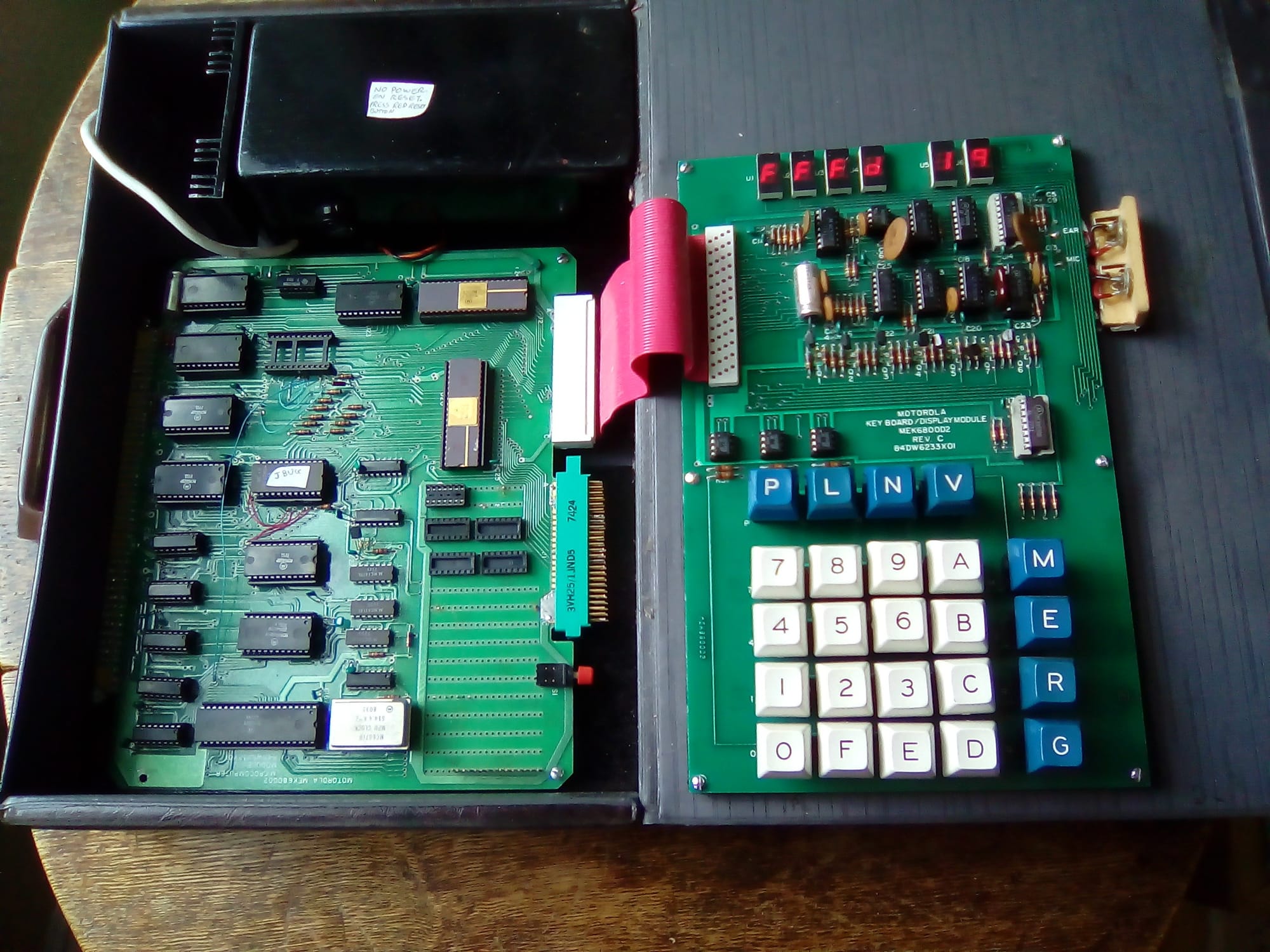Miscellaneous
This site was revised on 28th June 2018
The experience I gained at work in assembly language programming of the Motorola 6800 and 6809 microprocessors enabled me to write a program in 68000 assembler to extract the million or so prime numbers from the first 16 million natural numbers using the Sieve of Eratosthenes. It was then my intention to successively multiply these primes together, then and add 1, to hopefully obtain a massive prime number. After three days of running the BCD multiplication program I realised two things. One was that the number may or may not be prime and I would have no way of verifying if it was prime. If it was not prime all I would be able to say that the factors were greater than the top of my million or so primes. Consequently, I aborted the project. The programs were developed and run in the EASy68K environment, available for a PC from http://www.easy68k.com.
For a whiff of nostalgia, here is a photo of the Motorola 6800 MEK D2, with its full-house of 512 bytes of static RAM, that first got me involved with microprocessors. It is still working after 40 years!
